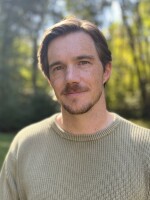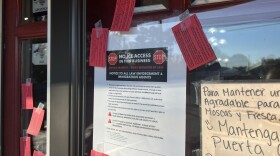In the 1930s, the federal government started to map out regions deemed financially stable enough to receive mortgage assistance through a process called “redlining.” The areas identified as “too risky” for loans were largely concentrated in minority and low-income neighborhoods. During the same time, the City of Durham implemented tree-planting programs across various neighborhoods. The percentage of tree coverage correlates with the redlining maps, creating a disparity in tree canopies between neighborhoods, according to a 2016 study by Duke’s Nicholas School of the Environment.
“We have this throughout the city of what happened in the 1930s,” said Greg Cooper, a graduate student at Duke’s Nicholas School of the Environment.
Cooper studies environmental management and forestry, and co-authored the report.
“If you map our current tree canopy coverage, which were planted around the same time the maps were generated, we find that those affluent neighborhoods have more trees than those poorer neighborhoods by a three-fold basis.”
Kofi Boone, an associate professor of landscape architecture at N.C. State University, said trees add several environmental benefits to urban areas and residential neighborhoods. Those include: absorbing storm water on rainy days; providing shade and reducing energy costs for adjacent buildings; and helping make streets more inviting, which encourages outdoor activity.
However, Boone explained that, “Different communities have different values.” Some residents in gentrifying areas may be wary of tree-planting in their neighborhood because it can signal increasing costs and possible displacement.
“Their environmental values may not be greening and beautification – things we think are mainstream,” said Boone. “They may be more basic ones like access to affordable housing, transportation and other things that build community networks.”
Boone continued, “The interest in resources for something as benign as a tree might be perceived as a threat. When people see reinvestment in the public realm, it sends a que to some folks of, ‘Uh oh, this is going to impact my property values. The clock is ticking and we have to think about relocating.’”
Boone and Cooper agree that cities must engage communities that historically have not had a large percentage of trees, while also addressing the status and health of current trees in affluent neighborhoods.
“The biggest thing is being inclusive of who we are including in the conversation,” said Cooper. ”So bringing in groups from all over the city instead of the traditional neighborhoods where we have planted trees in the past and continue to plant. We need to find a way to reach out to more people in order to break that barrier.”
Note: this segment is a rebroadcast which originally aired 4/25/2017








